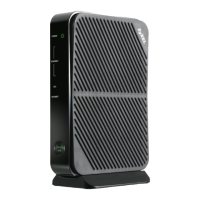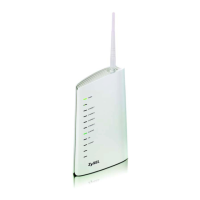P-79X Series User’s Guide
167
CHAPTER 17
Quality of Service (QoS)
17.1 Overview
Use the QoS screens to set up your P-79X to use QoS for traffic management.
Quality of Service (QoS) refers to both a network’s ability to deliver data with minimum delay, and
the networking methods used to control bandwidth. QoS allows the P-79X to group and prioritize
application traffic and fine-tune network performance.
Without QoS, all traffic data are equally likely to be dropped when the network is congested. This
can cause a reduction in network performance and make the network inadequate for time-critical
applications such as video-on-demand.
The P-79X assigns each packet a priority and then queues the packet accordingly. Packets assigned
with a high priority are processed more quickly than those with low priorities if there is congestion,
allowing time-sensitive applications to flow more smoothly. Time-sensitive applications include both
those that require a low level of latency (delay) and a low level of jitter (variations in delay) such as
Voice over IP (VoIP) or Internet gaming, and those for which jitter alone is a problem such as
Internet radio or streaming video.
17.1.1 What You Can Do in the QoS Screens
•Use the General screen (Section 17.2 on page 170) to enable QoS on the P-79X, decide
allowable bandwidth using QoS and configure priority mapping settings for traffic that does not
match a custom class.
•Use the Class Setup screen (Section 17.3 on page 171) to set up classifiers to sort traffic into
different flows and assign priority and define actions to be performed for a classified traffic flow.
17.1.2 What You Need to Know About QoS
QoS versus Cos
QoS is used to prioritize source-to-destination traffic flows. All packets in the same flow are given
the same priority. Class of Service (CoS) is a way of managing traffic in a network by grouping
similar types of traffic together and treating each type as a class. You can use CoS to give different
priorities to different packet types.
CoS technologies include IEEE 802.1p layer 2 tagging and Differentiated Services (DiffServ or DS).
IEEE 802.1p tagging makes use of three bits in the packet header, while DiffServ is a new protocol
and defines a new DS field, which replaces the eight-bit Type of Service (ToS) field in the IP header.

